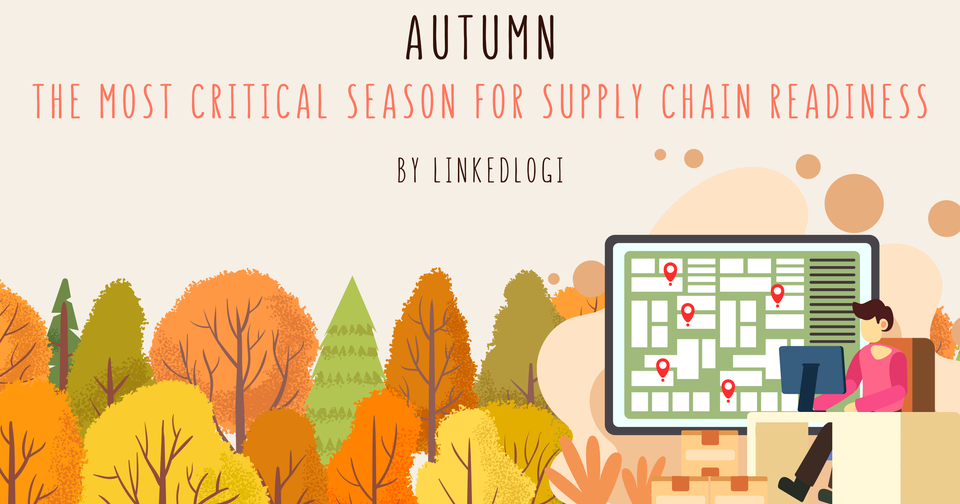Why Autumn Is the Most Critical Season for Supply Chain Readiness

Autumn is more than a season of falling leaves—it’s a decisive period for businesses preparing for festive sales, global trade surges, and year-end inventory cycles. For supply chain and logistics managers, these months represent a golden window to optimize operations, anticipate demand, and mitigate risks before the high-pressure winter season.
Data shows that businesses that prepare proactively in autumn reduce stockouts by 20–30%, optimize transport costs, and increase warehouse efficiency. Platforms like LinkedLogi provide real-time visibility, predictive analytics, and warehouse flexibility, allowing companies to plan strategically for seasonal demand surges.
Seasonal Demand Shifts in Autumn
Autumn is characterized by specific market dynamics that every logistics professional must monitor:
- Increased Consumer Demand: Retailers and distributors stock up in anticipation of festive seasons like Diwali, Thanksgiving, and Christmas. Inventory planning becomes critical to avoid delays.
- Marketing-driven Sales Peaks: Seasonal promotions drive sudden spikes in orders, putting pressure on warehouses, transport, and last-mile delivery.
- Global Trade Fluctuations: Import/export volumes increase as companies try to beat end-of-year port congestion, raising the complexity of international logistics.
Understanding these seasonal shifts allows logistics managers to forecast demand accurately and plan warehouse allocation, transport schedules, and labor resources effectively.
Inventory Planning for Autumn Success
Effective inventory management is the cornerstone of autumn readiness:
- Demand Forecasting: Use historical sales data and predictive analytics to estimate seasonal spikes. Consider SKU-level analysis to identify products with high return rates or fast turnover.
- Strategic Inventory Placement: Distribute stock closer to high-demand regions, reducing shipping times and last-mile delivery costs.
- Safety Stock & Buffer Inventory: Maintain additional stock for high-variance products to prevent stockouts and lost sales.
- Automated Replenishment: Platforms like LinkedLogi integrate warehouse and inventory data to trigger restocking automatically based on real-time demand patterns.
Transportation and Freight Planning
Autumn introduces unique transportation challenges:
- Weather-Related Delays: Rain, fog, and storms can disrupt road freight schedules.
- Carrier Availability: Transportation providers are often at full capacity during seasonal peaks.
- Port and Customs Congestion: International shipping windows tighten, and delays can ripple through the supply chain.
Best Practices:
- Diversify carriers and shipping routes.
- Consolidate shipments where possible to reduce costs.
- Use technology like LinkedLogi’s route optimization to monitor shipments and dynamically adjust transport modes for speed and cost efficiency.
Technology as an Enabler
Digital platforms are vital for autumn readiness:
- Predictive Alerts: Identify potential delays before they occur.
- Integrated Dashboards: Monitor inventory, warehousing, and transport from one interface.
- Automation: Reduce manual errors in order fulfillment, shipment tracking, and stock management.
Companies leveraging LinkedLogi gain end-to-end visibility that allows proactive decision-making, ensuring smooth operations even during peak demand.
Operational Humanization
Planning isn’t just about data—people are critical:
- Collaborate across procurement, warehouse, and transport teams.
- Use communication tools to quickly resolve bottlenecks.
- Train teams to handle seasonal surges and unexpected challenges.
Conclusion
Autumn tests the resilience of supply chains. Businesses that plan proactively, adopt predictive analytics, and leverage LinkedLogi’s digital platform turn seasonal challenges into opportunities. Optimized inventory, transport, and warehouse operations lead to improved service levels, reduced costs, and stronger partnerships with customers and vendors.
